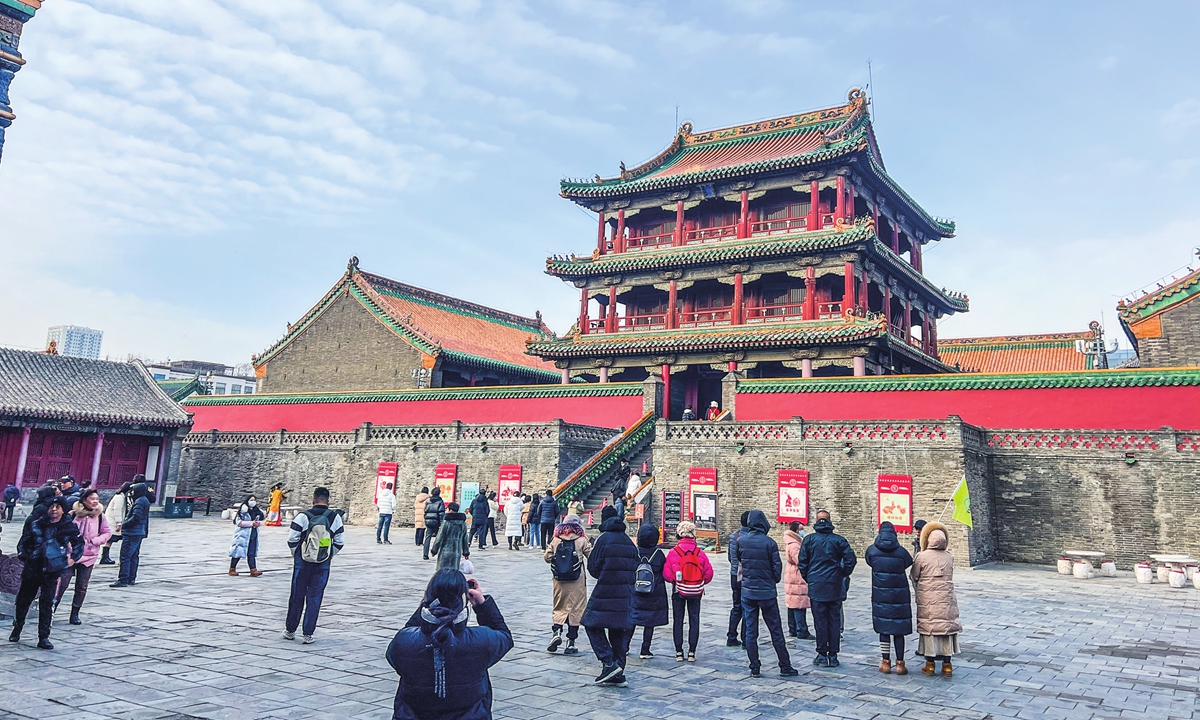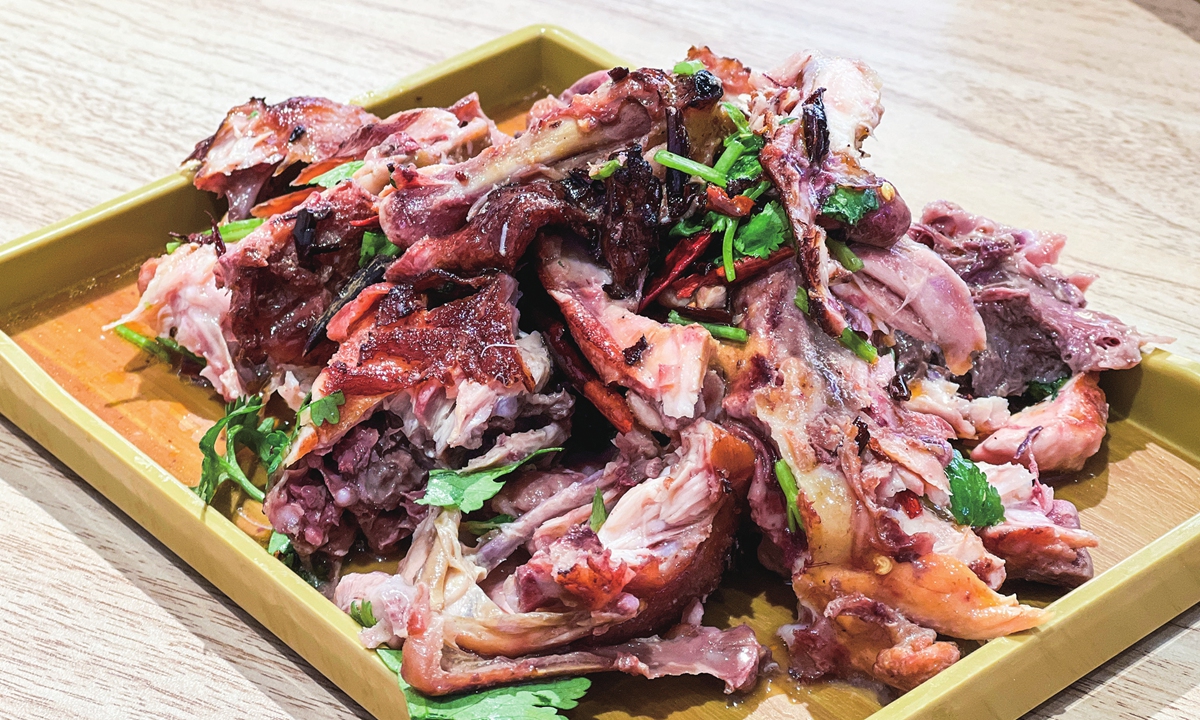
Mukden Palace in Shenyang, Northeast China's Liaoning Province Photo: Leng Shumei/GT

Jijia, or chicken rib, a local dish of Shenyang Photo: Leng Shumei/GT
Nine yuan ($1.25) for a delicious jijia (chicken rib), five yuan for seven juicy mini shaomai (Chinese steamed open dumplings)... Shenyang, a major city of northeastern China that is about three hours of high-speed train from Beijing, is becoming a popular destination for young people in the capital to spend their weekends, thanks to its unexpectedly high cost-performance ratio of food, leisure and entertainment, not to mention its unique regional culture and rich historical heritage.
During a two-day citywalk, young people can visit the busy morning market, explore the Dashuai Mansion and Shenyang Imperial Palace, check the Xiaonan Church (whose official name is the Sacred Heart Cathedral of Shenyang), taste the famous local barbecue and experience Shenyang's famous bathing culture.
Birthplace of a dynasty Shenyang, the capital city of Northeast China's Liaoning Province, is known as the "birthplace of one dynasty, home to two emperors." It was also formerly known as Shengjing and Fengtian. Shengjing, or Mukden in Manchu dialect, means "to arise" while Fengtian means "by the grace of God."
The most representative of Shenyang's unique historical status is undoubtedly the Shenyang Imperial Palace Museum, also known as the Qing Shenyang Imperial Palace, which is a destination tourists must not miss when visiting Shenyang.
Although it cannot be compared to the Palace Museum in Beijing in terms of size, grandeur or richness of collections, the Shenyang Imperial Palace is the only remaining complete ancient palace complexes in China outside Beijing.
It is the residence of the imperial family of the Qing Dynasty (1644-1911) before they moved to Beijing and established the dynasty. The main structure of the Shenyang palace was built in 1625 when Nurhachi (1559-1626), founder of the kingdom of Great Jin which preceded the Qing Dynasty, was in power.
It was finished in 1636 by his son Abahai (also known as Huang Taiji).
Although you might have already visited the Palace Museum in Beijing, you will still be impressed by the buildings in the Shenyang's Imperial Palace as they are filled with Manchu cultural characteristics.
In contrast to the architectural layout of the Forbidden City in Beijing, which features low palaces and high halls, the Shenyang Imperial Palace has a "high palace, low hall" structure.
The Chongzheng Hall in front of the Phoenix Tower is 11.85 meters high, while the Qingning Palace behind it is 16.33 meters high.
This architectural layout is related to the living habits of the Manchu people as the early Manchu people mainly lived in mountainous areas, forming the habit of building houses in high places to avoid wild animals and defend themselves against enemies.
As Shenyang is a city built on a plain, the palaces were built on elevated platforms using rammed earth.
If you visited the palace after November 16, you might have enjoyed observing about 200 pieces of delicate porcelains and 30 landscape paintings from the Ming (1368-1644) and Qing dynasties.
Great place of leisureTo have a perfect night in Shenyang, a delicious local barbecue must top your to-do list.
The barbecue in northeastern China is famous across the country and, among them, Shenyang's barbecue is considered a top choice.
As a famous saying goes, "in Shenyang, there is nothing that cannot be solved over a barbecue, if there is, then make it over two barbecues." Shenyang people's love for barbecue is in their blood.
Although many of today's barbecue restaurants in China have been modernized in their decoration and tools, Shenyang people still prefer the old way of using a clay stove to barbecue.
If you want to take a bite of both Shenyang local cuisine and exotic flavors, you can explore the Xita Korean neighborhood, which is home to thousands of people of the Korean ethnic minority.
With a variety of Korean-style bars, malls, salons, banks and supermarkets, Xita offers every element of food, culture, entertainment and everyday life that is unique to South Korea. For this reason, it is dubbed the "little Seoul" of northeastern China.
This is also an area where visitors can encounter both North and South Korean culture. Walking through the bustling streets in the area, it is not strange to hear the sounds both of traditional North Korean melodies and South Korean K-Pop.
After a delicious dinner, a northeastern China style bathing center is where you can leisurely spend the rest of the night.
Bathing houses in Northeast China can be said to be a paradise for leisure where you can spend the whole day, letting go all the worries of your daily life and, instead, immerse yourself in massage, spa services, movies, mahjong and extensive buffets.
As Shenyang citizens say: "In the bathing houses of other cities the service ends when you finish your bath, but in Shenyang, when you finish your bath the fun has just started."
Amid the recent cold and snowy days of Beijing, many young people are sure to look forward to spending a wonderful weekend in one of Shenyang's renowned bath houses.